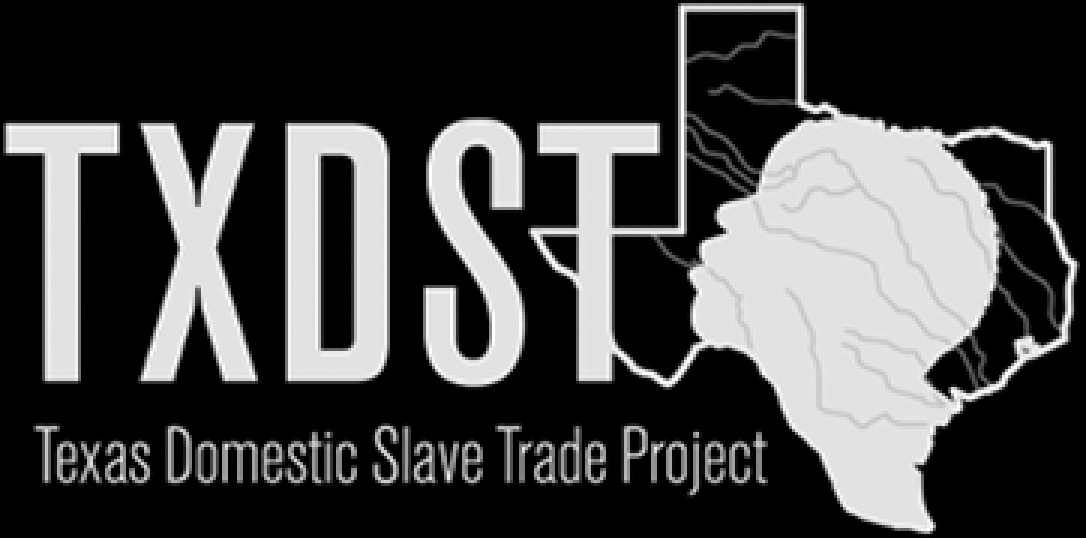Events taking place in Brazoria, Red River, Waller, and Washington Counties have shaped Texas history. These counties were also significant sites of slavery and its afterlives. The geography of each county influenced how enslaved Texans experienced living in the Lone Star State.
1815: Americans settle Pecan Point
American immigrants began settling near Pecan Point, in present-day Red River County.
December 1821: Department of the Brazos/Brazoria County
The first of Stephen F. Austin’s colonists arrived to the Department of the Brazos (Brazoria County) by boat.
June 1832: Battle of Velasco
A prelude of the Texas Revolution, the Battle of Velasco took place in Brazoria County between Texas and Mexico
1833: Samuel Seward
Samuel Seward and his family come to Texas among the original Old 300.
1834: Patton Place
Columbus Patton bought Martin Varner’s plantation in Brazoria County. Varner arrived in Brazoria in 1824 as one of The Old 300, and brought at least two enslaved men with him to Texas.
April 1836: Texas Wins Independence
General Sam Houston led the Texan Army to beat the Mexican Army at the Battle of San Jacinto.
1837: Red River County Formed
The First Congress of the Republic of Texas formally delineated the boundaries of Red River County District into Red River and Fannin Counties.
1837: Washington County Formally Organized
The newly formed legislature of the Republic of Texas established Washington County in 1836 and formally organized it in 1837.
1842: Eli Terry Sold into Slavery
James Carter and Eli Terry, a free man of color, traveled to Clarksville, the county seat of Red River County, where Carter sold Terry into slavery.
December 1845: Annexation of Texas
Texas became the 45th state in the United States.
1848: Alta Vista Plantation
Jared Kirby and his family move to Texas and establish Alta Vista Plantation in Waller County.
1850: Eli Terry Declared Free
Judge John T. Mills ruled that Eli Terry was indeed a free man. Council, Harrison, and Terry leave Red River County and return to Indiana.
1852: Cedar Lake Plantation
Stephen P. Winston purchased land along Cedar Lake in Brazoria County. He brought 61 enslaved people with him to Texas from Alabama.
1854: Sarah Ford Born
Sarah Ford was born on the Patton Plantation in Brazoria County.
February 1861: Texas Secession
A Secession Convention met in Austin in January 1861 and voted to secede from the United States. On February 1, the convention adopted an Ordinance of Secession. The next day they issued a Declaration of Causes.
June 19, 1865: Emancipation in Texas
U.S. Major General Gordon Granger read aloud General Order No. 3 informing enslaved people in Texas that they were free. This date came to be celebrated as Juneteenth.
1865: Freedmen’s Bureau Established in Brazoria County
The Bureau of Refugees, Freedmen, and Abandoned Lands established an office in Brazoria County.
1873: Waller County Formed
Created from portions of Austin and Grimes Counties and named after Edwin Waller, Waller County was established from parts of Austin and Grimes Counties.
1868: Black Men Vote in Brazoria County
Formerly enslaved men, Manual Hunt, Gus Bess, Edward Bess, Payton Munroe, and Ben Lee, filed a claim with the Freedmen’s Bureau against Stephen P. Winston. The year before, Manual Hunt, Edward Bess, and Payton Munroe registered to vote.
1876: Prairie View A&M University Formed
PVAMU was established as an Agricultural and Mechanical College for the Benefit of Colored Youth under the auspices of the Agricultural and Mechanical College of Texas (now Texas A&M University).
1901: Patton Plantation Sold
Governor James Hogg purchased the Patton Place. In 1958, Ima Hogg donated the plantation to the State of Texas.
1936-1938: Works Progress Administration Interviews
The Federal Writer’s Project, a Depression-era jobs program, interviewed formerly enslaved people to document their life histories. Mose Hursey and Harriet Jones (Red River County) and Sarah Ford (Brazoria County) were among the 2,400 survivors interviewed.
2017: Seward Plantation Sold
Wiley and Cynthia George purchased the Seward Plantation.
